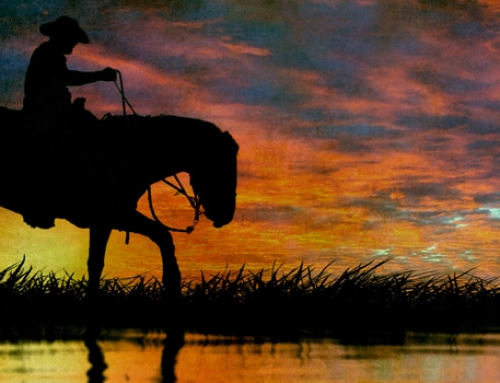The movies don’t give it justice. Whenever someone is hungry, John Wayne can whip out the hardtack or the salted bacon and make a fulfilling meal out of those meager fixin’s. Or, if you have seen the wind breaking clip from Blazing Saddles, those beans of a “musical” nature are plentiful. They’d sit out under the stars, next to that unneeded bonfire and played their harmonicas or extra guitars.
But of course the Wild West of the films wasn’t quite the same as the real Wild West. The real Wild West for those pioneers was a very different place indeed. If one could survive of harsh conditions, (remember Seth McFarlane’s Million Ways to Die in the West?) and scuffles over land, or a claim, or someone’s bad mood. Then you have the Natives with all their traits and beefs during the Indian Wars.
The frontier in the west in particular was down right inhospitable and those people who came looking for a new life, had to be hardy folk, who had the skills to take care of themselves with little to no resources and extreme scarcity of food available. Many of the early arrivals came on foot, with pack horses or driving heavy-laden oxen. Some even pulled their few household goods in handcarts along the wild terrain. With nare a trail or road in sight.
Below, we’ll look at how the pioneers coped with such food scarcity. How they used skills like hunting, like growing and gathering vegetables and the techniques they used to preserve food during often very hard winters.
Food, Food Life-giving Food
Because food doesn’t always grow on trees, the types of food that the pioneering folk ate were dependent on two things:
- The indigenous food stuffs available
- Provisions they pick up at the point of origin (these were non-perishables like, coffee, nuts, sugar and flour)
One thing that the Hollywood movies are true to when it comes to westerns is that there was always a visit to the local mercantile before a long trip.If you could find someone that could get you some supplies, in the real life West you were best to give them a visit. Here are the main things that we taken along for the ride:
Indigenous food – Meat
There was no local meat market at your neighborhood grocer, meat was either hunted or found. Everything from buffalo to ground hog and squirrel were meats that were part of the staple pioneer diet, certainly could be once again in our modern day. Back in that day, however, game was a bit more available than it is now. For instance, Buffalo hunting took two forms, ‘running’ and ‘approaching’. Running, involved great horsemanship and marksmanship. The rider would chase up against the animal on horseback and raise his gun to shot the beast as it ran alongside. Approaching involved the type of hunting our earliest forebears would have practiced, which is stalking and using understanding and knowledge of the beast’s behavior. The hunter would use his skill and guile, using his spear, or bow and arrow or later a Winchester to kill his prey. Buffalo, among moose, elk and dear are big beasts, that would provide a lot of meat for many people. The problem was the storage and the keep of the meat, we’ll explore the methods used, later on.
In our day and time, we won’t be riding alongside a buffalo, but one of the skills that we need to learn and foster beyond killing a steer or pig or even a buffalo (don’t forget the small game either) is the dressing and preparation of the meat and remains of the animal that we have chosen to nourish us.
Indigenous food: Vegetables
Now, Johnny Appleseed did his best, and yes he was a real person and yes, he did try to preserve the varieties of the apple trees we still enjoy, he could not bring it to all, nor did all environments provide a place for food to grow – fruit or vegetable alike. In the hunter/gatherer type of lifestyle, gardening and planting crops weren’t the most convenient. Vegetable gardening was one of the priorities of the early settlers of the Old West. And on the ol’ homestead, planting a variety of vegetables, including, squash, beans, peas, sweet potatoes and potatoes, as well as onions cucumbers and melons, was part of the pioneer skill set. The Old West ‘kitchen garden’ was usually planted twice a year, much like modern vegetable patches. The spring garden would provide produce such as peas and early cabbages, whereas the late summer garden would provide food through to the early winter. This planning was important to provide you a longer growing season for year round supplies and help avoid spoilage.
Foraging was not necessarily ‘wild’ back then. But if you knew where to look you could find the likes of wild onions, shallots, dandelions and dock as well as a variety of salad type leaves such as plantain or mullein. Berries, of all varieties were also a bit more plentiful than they are now. Key was and still is which ones are good eating and which ones will put you 6 feet under.
Corn, a staple of an early West settlement, was surely important as a vegetable, but also was better for bread and biscuit making. Corn could be found and ready for sale because it could keep a year or two properly dried. Wild foraging now could be a main activity for you and me if the supply chains keep breaking down as they are. It is wise to start studying your botany books and practicing a bit of horticulture.
Making the Food Last
It all good to be organized in planting of kitchen gardens for year round produce, it is quite another to make what you have grown, gathered and hunted to last longer than they usually would, especially over winter.
Here’s where we in modern times fail and would starve to death because of the ease of technology and modern food distribution systems. Frontiers people used a variety of techniques to preserve food, and we better follow in those well-worn footsteps if we are to be as well nourished as possible in times of challenges and hardships. In fact, we can go back to the learning the actual pioneers did from books written for them starting in 1846… yes 1846!
Bonus Content: Miss Beecher’s Domestic Receipt Book 1846
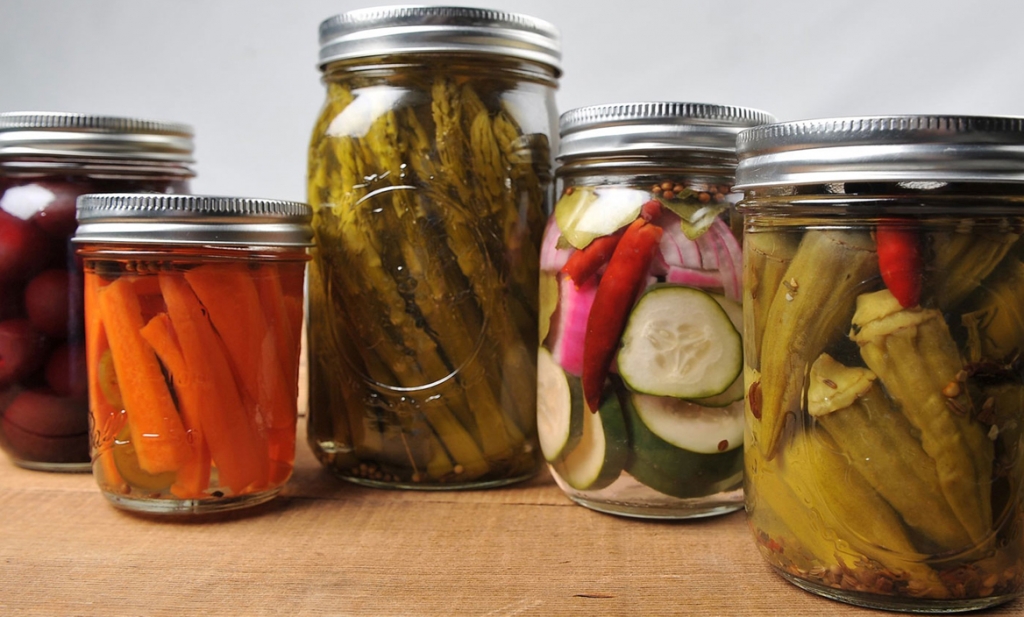 Preserving Vegetables: Pickling
Preserving Vegetables: Pickling
Health problems like scurvy and gout were most prevalent in those times (and for some now, we aren’t far off with all the processed foods we eat) which happens when fresh vegetables were very scarce or rarely eaten. Everyone at the time looked to one Miss Catharine Beecher, consider her the Martha Stewart of her day, the ‘go to’ authority on methods of preserving vegetables and her book “Miss Beecher’s Domestic Receipt Book” published in 1846 offered advise and recipes for pickling vegetables (see below for an example).
It’s important to note that more than just cucumbers and cabbage can be pickled and stored for longer use. Explore the many varieties of food and pickling recipes that can be found online as well. There are plenty to try!
Preserving Vegetables: Drying
It was found out, thanks to our indigenous native friends that fruit and vegetables could be kept for extended periods by drying them out. This had to be done on sunny days for the full drying process to happen. The fruit or veggie would be prepared, often being cut into thinner slices, then set under some light cloth (cheesecloth for example) and left out in a sunny spot, away from varmints that would like such a delicate treat. It’s important not to let the fruit get too hot as this would certainly cook it; but instead to dry it over a few days.
Preserving Meat: Salting
The main problem with killing an animal for food is that it wouldn’t keep long at all. As soon as the animal was killed, the preparation for preserving the meat had to be made. Any meat not eaten immediately would spoil and turn quickly, especially in the summer months. The main method of preservation that came from Europe was to salt the meat. We included a recipe from Miss Beecher who gave the settlers advice on how to do this (see her recipe below).
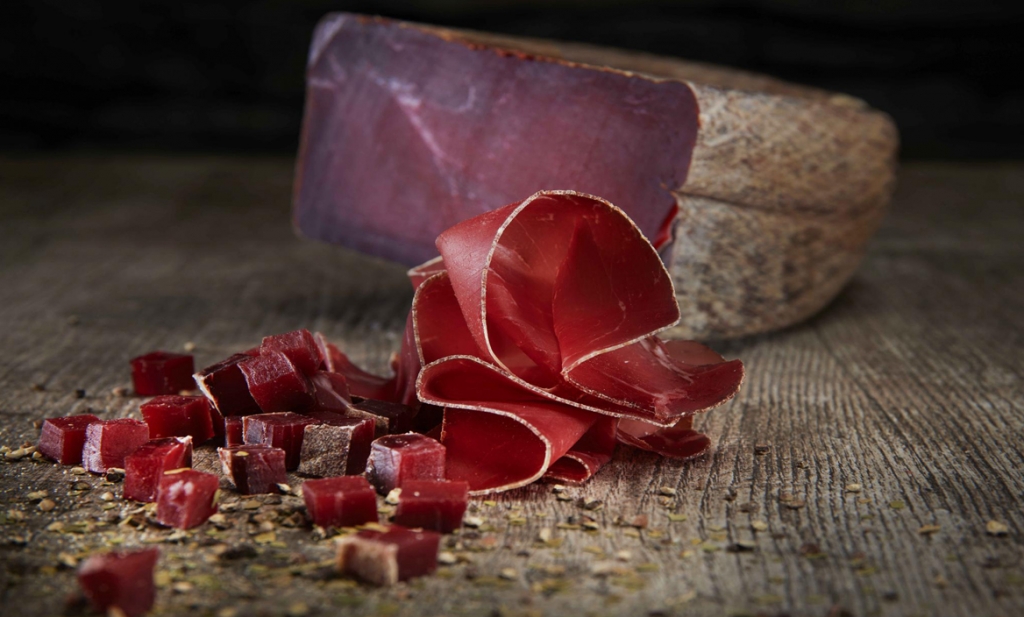 Preserving Meat: Drying
Preserving Meat: Drying
Again a food preservation method learned from the native Americans, drying meat was a recommended method for preserving large animals like cows and buffalo. Drying involved the thinly slicing of the meat, then laying the meat slices out for 2 weeks (preferably) in a hot sunny place away from predators who would gorge on it given the chance.
Preserving Meat: Smoking
This was probably the most complicated of all of the preservation techniques and involved specially prepared smoke houses. Typically, the meat would be salt cured first, sometimes using a mix of herbs for flavor. Then the meat would be hung in smoke houses over a hickory or oak based fire. The meat would hang in these smoke houses for up to a month.
Recipes That the Pioneers Used:
Pickling (the Miss Beecher way)
This recipe is taken directly from the Miss Beecher’s Domestic Receipt Book of 1846
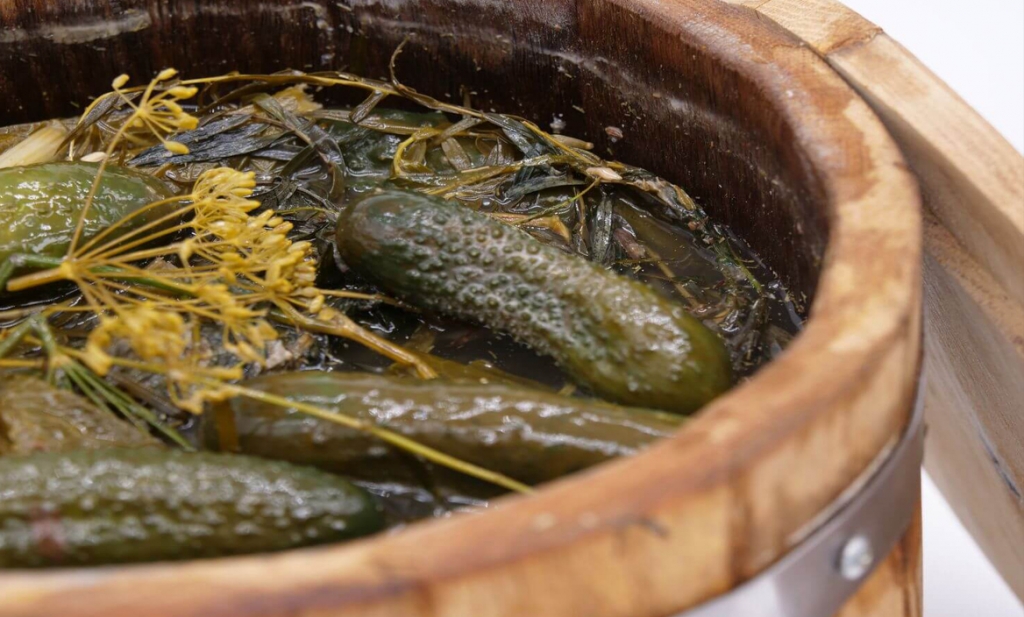 “PICKLES. Do not keep pickles in common earthenware, as the glazing contains lead, and combines with the vinegar. Vinegar for pickling should be sharp, but not the sharpest kind, as it injures the pickles. If you use copper, bell metal, or brass vessels for pickling, never allow the vinegar to cool in them, as it then is poisonous. Add a tablespoonful of alum and a teacup of salt to each three gallons of vinegar, and tie up a bag with pepper, gingerroot, and spices of all sorts in it, and you have vinegar prepared for any kind of common pickling. Keep pickles only in wood, or stoneware. PICKLES. Anything that has held grease will spoil pickles. Stir pickles occasionally, and if there are soft ones, take them out and scald the vinegar, and pour it hot over the pickles. Keep enough vinegar to cover them well. If it is weak, take fresh vinegar, and pour on hot. Do not boil vinegar or spice over five minutes. To Pickle Tomatoes. As you gather them, throw them into cold vinegar. When you have enough, take them out, and scald some spices tied in a bag, in good vinegar, and pour it hot over them. “
“PICKLES. Do not keep pickles in common earthenware, as the glazing contains lead, and combines with the vinegar. Vinegar for pickling should be sharp, but not the sharpest kind, as it injures the pickles. If you use copper, bell metal, or brass vessels for pickling, never allow the vinegar to cool in them, as it then is poisonous. Add a tablespoonful of alum and a teacup of salt to each three gallons of vinegar, and tie up a bag with pepper, gingerroot, and spices of all sorts in it, and you have vinegar prepared for any kind of common pickling. Keep pickles only in wood, or stoneware. PICKLES. Anything that has held grease will spoil pickles. Stir pickles occasionally, and if there are soft ones, take them out and scald the vinegar, and pour it hot over the pickles. Keep enough vinegar to cover them well. If it is weak, take fresh vinegar, and pour on hot. Do not boil vinegar or spice over five minutes. To Pickle Tomatoes. As you gather them, throw them into cold vinegar. When you have enough, take them out, and scald some spices tied in a bag, in good vinegar, and pour it hot over them. “
Beef Jerky
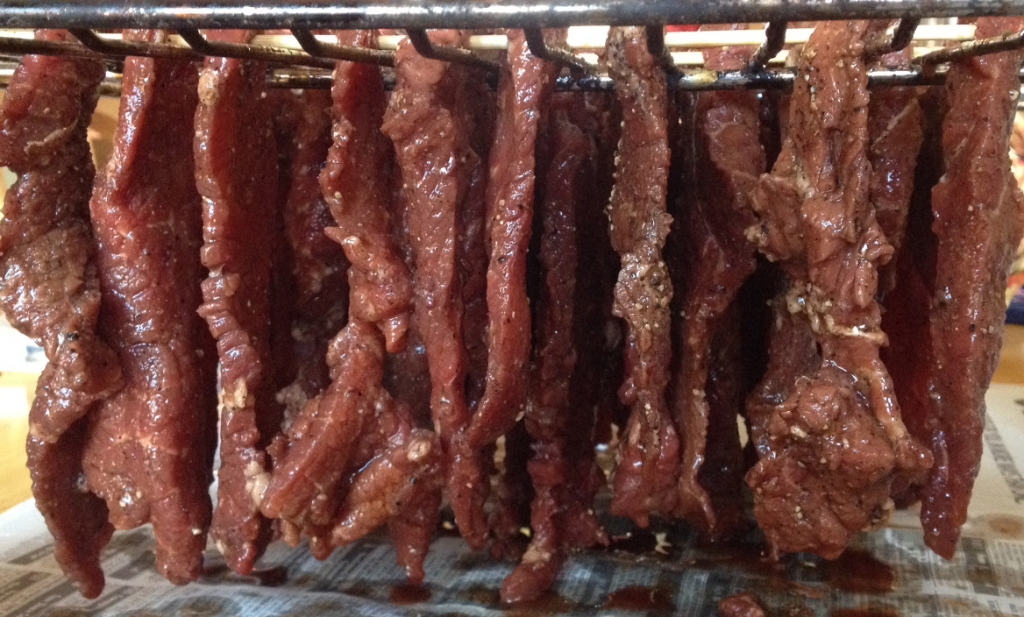 Meat:
Meat:
- Beef or buffalo
Jerky brine:
Note a modern marinade would include soy sauce and molasses.
- 2 quarts water
- 1 cup salt
- ½ cup sugar
- Black pepper
- Mashed onion
Make up the brine solution, mixing all of the ingredients together.
Add the thinly sliced meat and mix through the brine solution until completely covered.
Place a plate, or similar, on top of the meat and press it down firmly onto the meat.
Leave in a cold place (ideally a refrigerator or similar) for around 8 hours.
Next rinse the brine off the meat with water and dry the meat slices with a cloth.
Air-dry the meat for an hour.
You can now add other flavorings, such as herbs or pepper.
Air-drying over several days in a hot climate was the original way jerky was made. However, safer ways include drying in a low heat oven. The oven has to be very low heat and it takes many hours for the jerky to dry out (it’s important not to let it ‘cook’). If you have a smoke house, use that, it makes great jerky.
Salting Meat
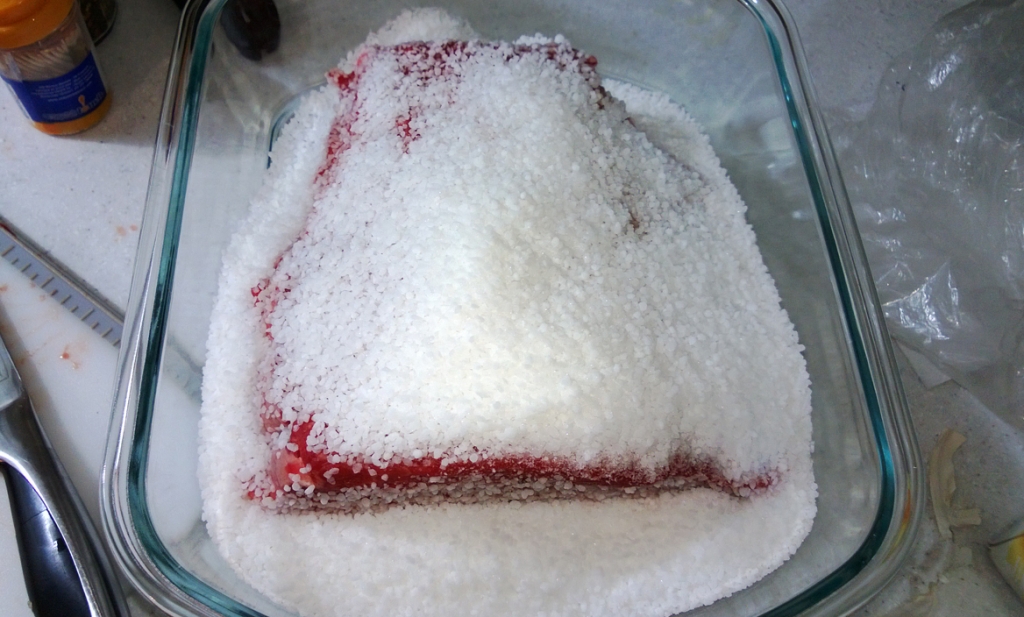 This recipe is again taken directly from the Miss Beecher’s Domestic Receipt Book of 1846
This recipe is again taken directly from the Miss Beecher’s Domestic Receipt Book of 1846
“Directions for salting down Pork.
Cover the bottom of the barrel with salt an inch deep. Put down one layer of Pork and cover that with salt, half an inch thick. Continue thus till the barrel is full. Then pour in as much strong pickle as the barrel will receive. Always see that the Pork does not rise above the brine. When a white scum, or bloody-looking matter rises on the top, scald the brine and add more salt. Leave out bloody and lean pieces for sausages. The Pork ought to be packed as tight as possible, and always kept under the brine. Some use a stone for this purpose. In salting down a new supply, take the old brine, boil it down and remove all the scum, and then use it to pour over the Pork. “
A Word About Your Survival Library
The old books that are now in archives in various places are rich in not only their knowledge that they are showing but can be that god-send that you are needing in your times of need. Books like Miss Beecher’s, who has been long dead, keeps dispensing the wisdom that they utilized on a daily basis to keep people alive but also, more importantly, thriving as they followed the enclosed advice. You would be wise to gather a copy of her book and put it into that Survival Library of yours.





